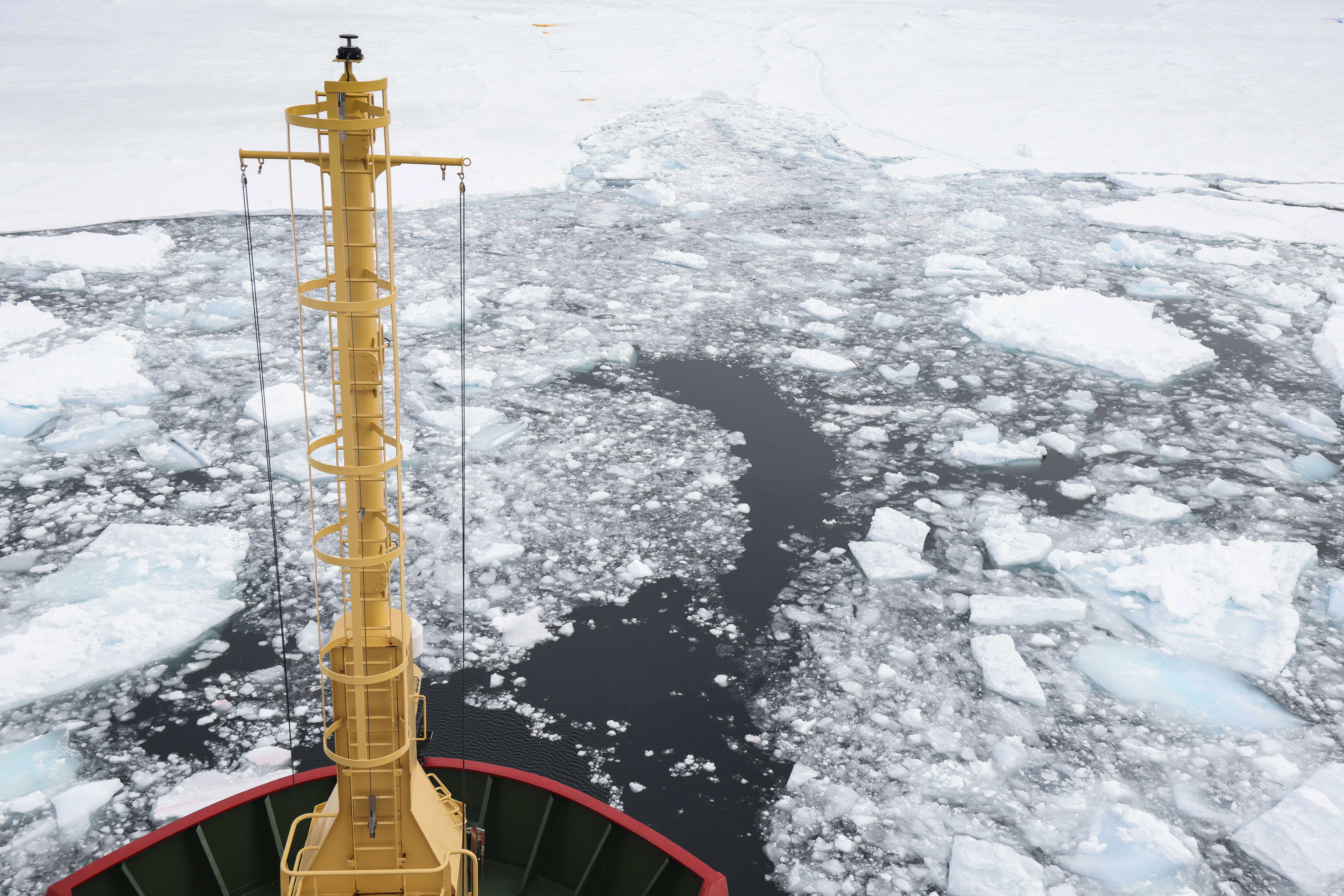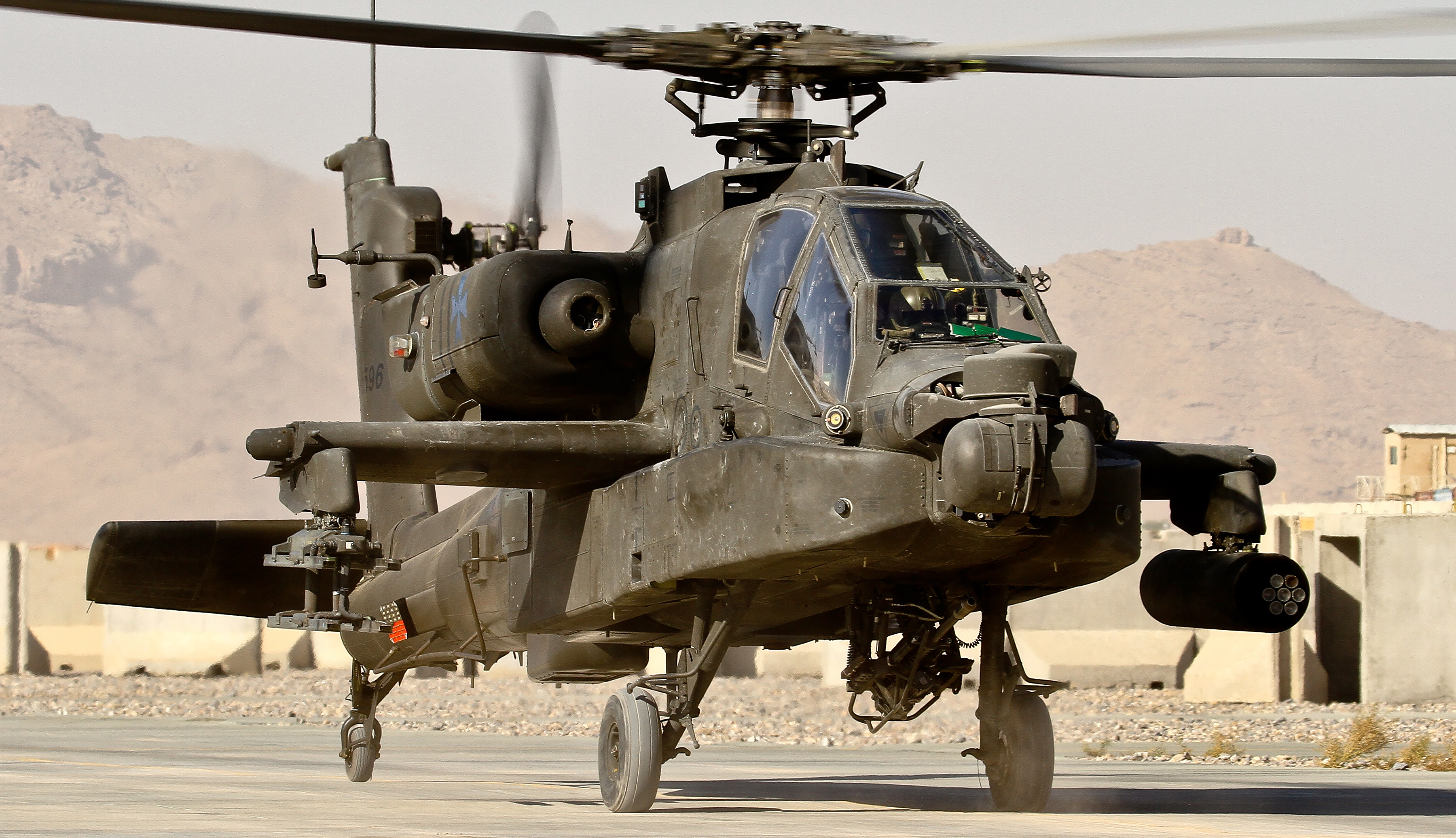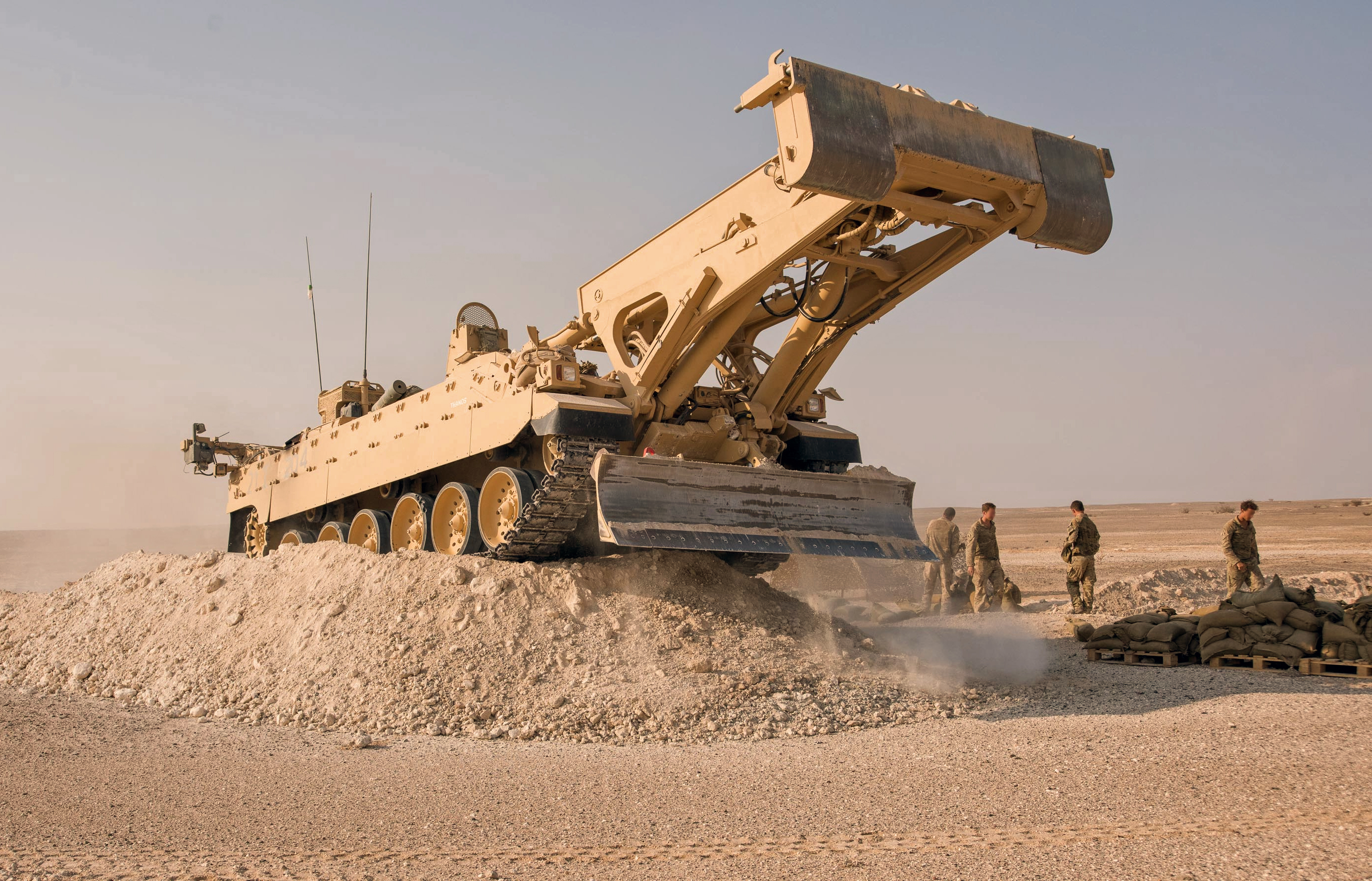Editor’s note: This is the transcript of a speech delivered at Defence and Security Equipment International by Lieutenant General Richard Nugee on 15 September 2021.
I am very grateful to DSEI for their foresight in allowing me to give a keynote address about why Defence should take climate change seriously, especially as perhaps 18 months ago this would have been met with a little more scepticism and a little less enthusiasm by some.
Whether we like it or not, the world is changing around us, in ways we can’t fully predict. And while the vectors of change – the physical environment in which we will have to operate and the basic building blocks of energy transformation – may be new, our Armed Forces have always had to deal with change, not least due to the actions and intent of perceived adversaries, as well as the political and economic environments and technological developments that evolve. So what’s different this time? I would suggest that climate change is asking us to look at the very basics, which we have taken for granted for at least 100 years, and take new unknowns into account which potentially have existential consequences. And if we do not, we ought to be clear, at the very least our freedom of manoeuvre, strategically to tactically, will steadily be eroded and diminished. So to remain at the forefront of operational capability, it is an imperative that we understand the future, and adapt to it, as best we can.
The recent IPCC report makes it clear that climate change is already affecting every region on Earth and the unpredictable meteorological conditions that result will continue.
I would argue that we should look at this issue as 3 interlinked imperatives – maintaining our freedom of manoeuvre as a militarily capable force, keeping our licence to operate, and seeing the technological changes as an opportunity. It is only by acting on all 3 that we will safeguard our operational effectiveness, the budget and our standing as a highly capable Defence force. Defence must understand the effects of climate change in any environment where they are likely to be deployed in the future. Understanding the causes of conflict, and therefore what can be done about it, is a critical first step to being able to support and help where that help is requested. Among others, Christophe Hodder, the UN climate security and environmental advisor to Somalia, eloquently describes how drought led to farmers moving to cities, to be recruited by al-Shabab; by resolving the drought through irrigation, the recruits dried up – so much so that al-Shabab began to attack the irrigation systems; they understood the relationship.
The recent IPCC report makes it clear that climate change is already affecting every region on Earth and the unpredictable meteorological conditions that result will continue. The rise in the number and intensity of natural disasters, as we have seen in the extraordinary wind speeds of Hurricane Ida, or the fires in so many parts of the world, or the floods in Europe, will continue and most likely get worse still – more frequent, more intense. The need for Humanitarian Assistance and Disaster Relief, according to almost all academic literature on this, is likely to grow, both at home and abroad. Defence will have to take this into account and here there is genuine opportunity, for collaborative training and operating, and for shared equipment development.
I would argue that we should look at this issue as 3 interlinked imperatives – maintaining our freedom of manoeuvre as a militarily capable force, keeping our licence to operate, and seeing the technological changes as an opportunity.
It is our duty, to our nations, to provide the best and most militarily capable Armed Forces that we can and that we must be prepared to deploy wherever our nations send us in the world. But that world is changing around us, so that what might have been once in a hundred year events are becoming almost the norm. The increase in temperatures is affecting the ice caps, the temperature of the sea and the heat of the air. All of these have an impact on our capability, and our freedom of manoeuvre around the globe.
For us to maintain that freedom of manoeuvre, we must be able to operate in a world where the current environmental envelopes built into our requirements are being pushed to their limits. For example, rising surface sea temperatures will force either operational compromises or new design criteria to be adopted. It is assessed that in the Gulf, where we have only recently opened a new base East of Suez, in the next 10-15 years the summer surface sea temperatures could reach 36° frequently and 38-40° occasionally, forcibly slowing our engines as the cooling sea would instead act as a thermal blanket.

With the potential for the arctic ice cap to melt in the summer in 15+ years, if we are to maintain our freedom of manoeuvre alongside the other competing nations, particularly Russia who claims the Arctic Sea as their own, we need to be able to operate within the same environment. Given the Russians, Chinese and Canadians are all hardening some of their ships’ hulls, to be able to deal with the disruptive ice state between open water and ice pack for which an ice breaker is required, we ought to do the same. This does not need to be all of our ships, but designing enough to be able to operate there would seem essential. And if we are operating more in the Arctic, we need to be adapted to the increased exposure in that region of the phenomenon of space weather, which affects navigation, timing, radar, and communications systems.
Freedom of manoeuvre is based on our abilities to understand the environment, at home and abroad, and act accordingly.
It is not just maritime systems that will be affected. On land, a warm year in the 2000s will broadly become an average year in the 2040s, affecting our ability to train, as we lose more days to being ‘too hot to train’. A recent study by the UK Met Office identified that in temperate climates the number of days lost to training due to increases in temperatures is likely to rise by between 75 and 150% by 2040. In Cyprus, the projection is that all training will be lost in August to heat. In the air, higher temperatures resulting in reduced air density, results in less effective aerodynamic lift. The effect on take-off runs, in terms of reduced payloads and fuel capacity and reduced climb rates means that increased runway length is one potential outcome.
A greater reliance on electricity and connectivity to optimise the value of renewable energy, a critical part of moderating demand and reducing surges in power (for which the concept of a storage mechanism at the appropriate level between supply and demand is essential) will inevitably lead to greater vulnerability to cyber attack, which must be taken into account. Critical National Infrastructure could be particularly vulnerable as we become increasingly interconnected.
Freedom of manoeuvre is based on our abilities to understand the environment, at home and abroad, and act accordingly. Our bases, airfields, ports and training areas are susceptible to powerful climactic events, so Defence must think hard about the resilience of its own fixed assets, about the effect of rising sea levels on our naval bases, and on the impact of hotter, drier weather on our training areas across the world. In the UK, we must look again at whether draining some of our training areas is really sensible, making them more likely to catch fire in the heat of the summer; a couple of years ago we lost 2 weeks training due to fires caused by training activity, on our principal training area of Salisbury Plain. The Pentagon have recently devoted significant time to looking at the flood, hurricane and fire risks of all their bases, having had fast jets severely damaged by intense hail storms and losing bases to floods. The rate of Global Mean Sea Level rise for 2006-15 is unprecedented over the last century, mostly caused by melting ice sheets and glaciers. If the Western Antarctic Ice Sheet melts, which it might if the temperature increases by 2 degrees, then mean sea levels might rise by as much as 3.3 meters. While extreme events that occur once every 200 years now are projected to occur every year by the end of this century, it is also the effect of severe coastal flooding that should concern us as that will inevitably lead to displacement and the potential for migration.

So if we are to maintain freedom of manoeuvre we must adapt to a changing, more challenging world – the environmental norms we have always operated under are changing, and we must adapt to meet them.
Defence, of course, is not working in isolation. Increasing numbers of governments are pledging to reach Net Zero green house gas emissions and in the UK this has been enshrined in law: the government will break the law if we do not reach net zero by 2050. This has a number of implications. As Defence is responsible for 50% of central government emissions, we will have to act to reduce our emissions if government is to reach its target. Government is already and will, I suspect, increasingly legislate for an emission-reduced approach to many areas, from cars and vehicles, to heating in our homes, to use of land and the preservation of biodiversity. Defence will not be exempt from much of this legislation and so will have to act. Our licence to operate will be eroded if we do not address the political and legal implications.
Reducing emissions will allow us to operate in host nations, and will at the same time ensure that we remain an attractive place to work for in our own country. Without an approach that states that we are taking climate change seriously and the effect we have on the atmosphere, there is the potential for legal challenge, as evidenced by the case against the Heathrow 3rd runway, political challenge, where we will be told what to do rather than have any influence over policy making, and a social challenge as fewer young people respect us and join our ranks.
The speed at which technology, particularly renewable energy technology, is developing has the potential to leave Defence behind. And here there is great opportunity, if we embrace the technological developments available. There are significant advantages tactically and operationally with a move to renewable energy, over and above the obvious advantages of reduced emissions. Importantly, many in industry do believe that the scientists are right, or at the very least are not prepared to ignore the risk that they are right. As a direct result, they are already changing their research and development to embrace the opportunities from an imperative to reduce emissions.

To give just a few examples. Electric small aircraft, ideal for short passenger journeys are already a reality – and this sort of technology is recognised by the RAF as also ideal for training pilots and air cadets – imagine the impact on those cadets that their first aircraft in Defence is electric – with the electricity coming from renewable sources, or in one case, through generators powered by sustainable aviation fuel. As the technology develops further, there will inevitably be improvements in speed (with an attempt at the electric air speed record in the UK just around the corner), and in the endurance of batteries, allowing greater range and/or more passengers. That technology, translated into Uncrewed air systems would offer greater endurance on task. And with the RAF looking to achieve 80% of their training synthetically in the future, the opportunities for greater tactical experimentation, out of sight of adversaries while at the same time saving money (and emissions) on fuel, maintenance and wear and tear, is genuinely capability enhancing. Further, sustainable aviation fuel, although not yet viable economically, is on the horizon and will deliver the same capability and also reduce emissions.
In some of the buildings that are being developed for the training estate, such as at Nesscliffe, the developers have looked at every material they have used and, in order to reduce embedded carbon, have thought carefully and changed their approach. The net effect was to reduce cost, both of operation and for construction, with the savings being recycled into the estate, in this case being used to electrify the infantry ranges, creating a better environment to improve operational capability.

The British Army and industry have already developed a Hybrid Jackal and are developing hybrid systems for both the Foxhound and logistic vehicles such as MAN SV. The Hybrid Jackal has the ability to run on battery power for over 2 hours off-road before recharging by using its onboard engine. While the tactical advantages of a silent, emission free vehicle with reduced thermal profile are obvious in terms of stealth, the demonstration programme is showing other significant benefits. The weight of the battery and careful placing in the design of the vehicle creates a lower centre of gravity that will improve off road capability, reducing the chances of a vehicle tipping over. With electric drives on each wheel, it offers far more control and manoeuvrability (and, useful in urban areas, the ability therefore to pirouette 360 degrees on a single point) and far better off-road capability, including going up and down steep slopes more effectively. Fuel consumption is reduced, by as much as 20% in a battlefield scenario, and more in an urban setting. But it is perhaps the effect on the crew that is more surprising: with no noise in battery mode, there is increased situational awareness; and with no vibration and noise from an electric motor, there is less crew fatigue. Importantly, with electric drives, there is far less training for the driver required – it is described as like driving a golf buggy – giving both confidence to the driver and making it less likely that the vehicle will get into difficulty. The long-term effect is greater operability in terms of distance, duration without resupply and fightability.
Defence and industry must work in partnership on these issues if we are to maintain our freedom of manoeuvre and licence to operate, in our own country and in host nations.
Defence and industry must work in partnership on these issues if we are to maintain our freedom of manoeuvre and licence to operate, in our own country and in host nations. There are significant opportunities for us not only to improve operational effectiveness, and our attractiveness to recruits, but also to reduce emissions and at the same time build our own resilience. By leading on some of these technologies and using them as experimentation test beds, not only will we become significantly better at setting requirements in the future, but we will also de-risk future technologies and possibly novel weapons while at the same time become an authority on setting the standards required across our alliances. Further, in line with the new Defence Industrial Strategy, we should look to exploit the momentum for innovation in the UK of some the new technologies available.
This does not need to be a zero sum game – either green or capable. There are many opportunities where adopting a green approach, understanding the effects of climate change and the technology being developed to adapt to and mitigate its effects, can result in a more capable force – either directly through adoption of new technologies or indirectly through opportunities to become more self-sufficient and resilient, thereby saving money that can be spent on enhancing further our operational capability.
However, we need to start on this journey now, to learn about the new, to design for the future, or we will be caught out by nature itself. That is the imperative we should keep in our minds and that should drive our approach.

Richard Nugee
Lieutenant General Richard Edward Nugee is a British Army officer. He has served in several senior roles including Defence Services Secretary (2015–2016) and Chief of Defence People (2016–2020). He has been leading a review into climate change policy in the Military of Defence since March 2020.

